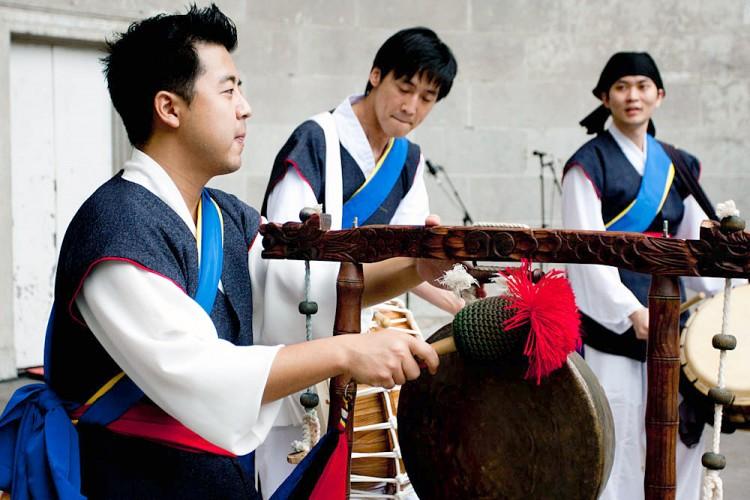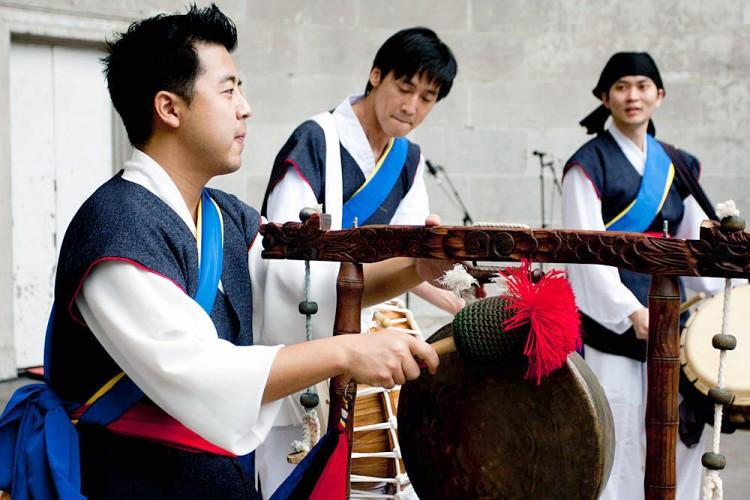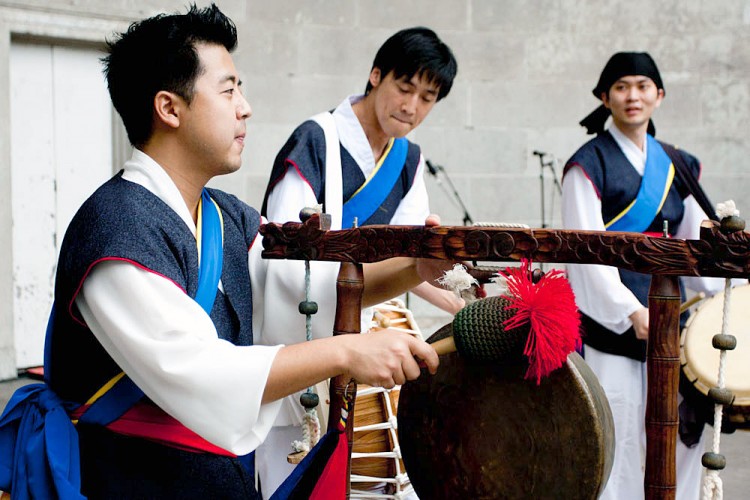Korean Traditions in a Modern World
The second annual Korean Day festivities attracted a large crowd to Central Park’s Naumburg Bandshell on Tuesday afternoon.

TRADITIONAL BEAT: Samulnori drummers perform at Korea Day in Central Park on Tuesday. Tara MacIsaac/The Epoch Times
|Updated:






